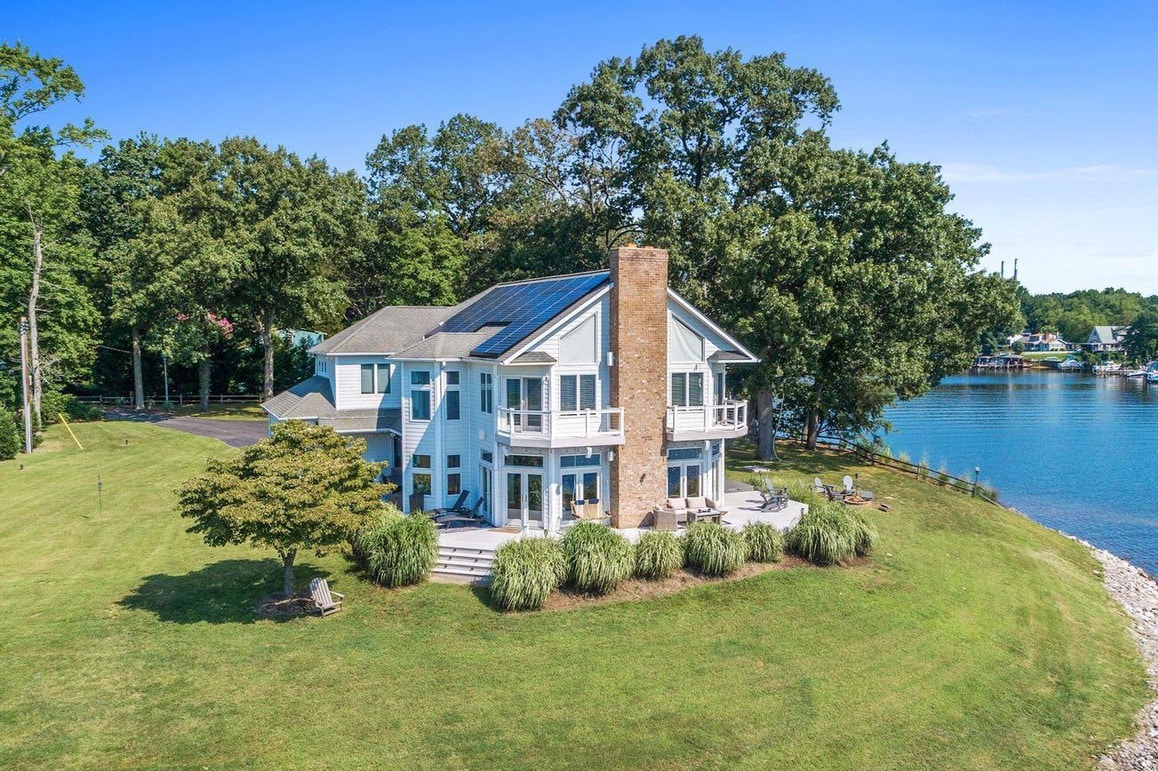How to Protect Your Home From Flooding: 9 Tips to Follow
When the time comes to buy a home, you’ll likely look at every aspect of your new neighborhood, the home itself, and any climate hazards that might be common in the area. If you’re house hunting in a location where there’s a high risk of flooding, it’s likely you’ll need to purchase flood insurance. In addition to having flood insurance to protect your home, there are several steps you can take to learn how to prepare for a flood.
From melting snow to excessive rain brought on by a hurricane, a variety of natural disasters can cause flood damage to your home. Here are nine tips you can follow to protect your home from flooding.

How to protect your home from flooding
Many people think a standard homeowners insurance policy includes coverage for flood damage, but it doesn’t. Flood damage is only covered by flood insurance, which is a separate policy. According to the National Flood Insurance Program (NFIP), almost 20 percent of all flood claims come from areas considered to be at a low to moderate risk for flooding.
1) Get flood insurance
Even if your home is not in a high-risk flood zone, you should consider getting flood insurance. For example, should your home flood just one inch, the damage can cost you upwards of $25,000. Your mortgage lender may require you to have flood insurance coverage even if your home is located in a moderate-to-low-risk area. While you can purchase flood insurance at any time, note that it won’t take effect until 30 days after you’ve paid your premium.
To see what the flood risk is in your area, check out the Federal Emergency Management Agency (FEMA)’s Map Service Center. The map can help determine if your home, or one you’re considering purchasing, is located in a high-risk flood zone. Knowing what type of flood zone your home is located in can help you choose adequate flood insurance coverage.
If you’re still house-hunting, sites like Redfin show a home’s estimated flood risk and FEMA flood zone. That way you can prepare for a flood before ever bidding on a home.
2) Install a battery-powered sump pump
A sump pump will remove excess water from your basement and relocate it to a dry well or storm drain. Sump pumps require electricity to operate, so it’s a good idea to install a battery-operated backup so the pump will continue to work even if the power goes out. The average cost of installing a sump pump is about $1,200, but it’s a solid investment to help protect your home from flooding or at least minimize flood damage.
To prepare for a flood, it’s best to seal basement walls with a waterproofing compound to prevent seepage through cracks. If you’re unsure where to begin, contact a professional who can help you waterproof your basement and other areas of your home vulnerable to a flood.
3) Invest in flood sensors
Flood sensors are a proactive approach to limiting flood damage. They are placed in various locations throughout your home and will alert you the moment water is detected in a location that should be dry, such as the basement. A flood sensor will help you quickly respond to a flood. It will also notify you of other events that can cause serious water damage, like a broken pipe or overflowing sink.
Integrating flood sensors into your home security or home automation is just another step to help protect your home from flooding. Your home security company can help you find the right flood sensors for your living space.
4) Install an automatic shut off valve and check valve
When installed in a strategic location, an automated shutoff valve can help prevent major flood damage to your home. An automated shutoff valve is located near the primary water inlet in your house and shuts off the main water supply when a flood sensor is activated. They are battery-powered, and thanks to wireless technology, there are no wires running from the flood sensors to the automated shutoff valve. Just like flood sensors, an automated shutoff valve can be integrated into many monitored home security systems and home automation systems.
You can install check valves in plumbing to prevent flood water from backing up into the drains of your home. However, if you’re facing an immediate flood risk and you don’t have such valves in place, you can use large corks or stoppers to plug drains in showers, tubs, or basins to protect your home.

5) Elevate the water heater and major appliances
To prepare your home for a flood, be sure your water heater, furnace, and major appliances, such as the washer and dryer, are at least one foot off the ground. You can choose a temporary solution, such as placing them on cement blocks and reinforcing them with sandbags, plywood sheets, or other sturdy barriers. Or you can opt for a more permanent solution, like using a cement pedestal. If you live in a warm city like Houston, TX, or Tampa, FL and have an outdoor HVAC unit, make sure it is also elevated one foot off the ground.
An HVAC professional can help you relocate your furnace, water heater, and other major appliances. If you manage to keep your water heater undamaged, it may be your best source of freshwater after a severe flood. You can also consider calling an electrician to help move your home’s electric panel to a place that is less likely to be flooded.
6) Add barriers or sandbags around your home
If your local building codes permit it, you can construct barriers around your house’s perimeter. Beams, levees, and floodwalls can help stop flood water from entering your property. You can also add sandbags around your doors if permanent barriers are not an option to protect your home from flood damage.
Faced with an imminent flood threat, two people can fill and place 100 sandbags in about one hour to create a protective wall that’s one foot high and 20 feet long. Make sure to follow weather alerts on the radio or TV news to see if your community is offering free sandbags.
7) Create an emergency flood plan and home inventory list
Now that you’ve made steps to protect your home from flooding, it’s time to learn how else you can protect your household. Sometimes a flood happens quickly, leaving homeowners with little time to plan an escape. It’s important to plan and practice a flood escape plan with your household on a semi-yearly basis. Members of your household should know safe places they can go to if they can’t get home due to flooded streets. They should also be warned of the dangers of a flood. For example, fast-moving water can appear safe, but can easily sweep them off their feet.
If you don’t already have a home inventory, now is the time to create one. To make the process of filing a flood insurance claim easier, make sure you have the purchase date, approximate value, and documentation of your belongings. You can create a home inventory list as a written copy, a digital list, or through a visual recording like video or photos.
8) Safeguard important paperwork
Gather information you might need during and after a flood and place it in a waterproof document container. Be sure you include a copy of your flood insurance policy and your insurance provider’s contact information. Also include copies of other important paperwork, such as the deed to your house, birth certificates, and health insurance cards. It’s also important to have electronic copies where you can securely access them should something happen to the paper copies. To be better prepared for a possible flood, make sure these documents secured and accessible.
9) Put together an emergency kit
Now that you have an emergency flood plan and have safeguarded important documents, it’s time to put together an emergency kit. From a long-term power outage to a natural disaster, like a flood, a well-stocked emergency kit can help you and your household navigate unexpected circumstances. In addition to first-aid supplies, your family emergency kit should contain the following:
- Canned food
- Bottled water
- Blankets
- At least one flashlight with extra batteries
- Change of clothes for each household member
- Toiletries and essential prescription medications
Additional items you may want to include in your emergency kit are insurance policies, copies of important documents, emergency cash, and portable chargers. Make sure to store the kit in a location that every member of your household can access. Floods can cause damage that’s both widespread and expensive. However, with the proper precautions, knowledge, and preparation, you can take steps to minimize the risk of flood damage to your home.
The post How to Protect Your Home From Flooding: 9 Tips to Follow appeared first on Redfin | Real Estate Tips for Home Buying, Selling & More.
